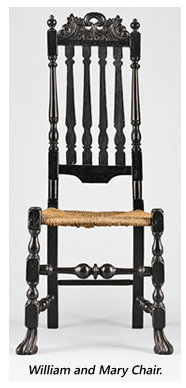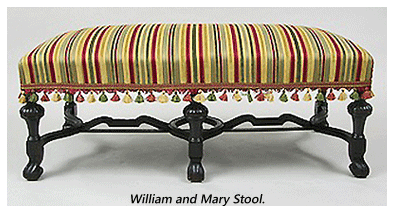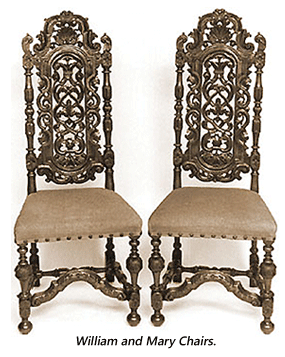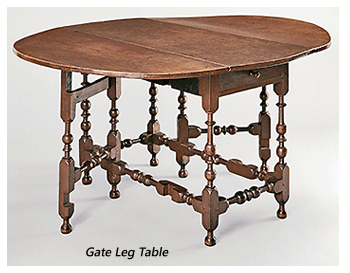- Prelude
- Editorial
- A Conversation with Sheela Gowda
- The DIY Artist with a Mission
- Discovering Novel Horizons
- A Conversation with Raqs Media Collective
- Manjunath Kamath
- Jitish Kallat- the Alchemist
- The Artist and the Dangers of the Everyday: Medium, Perception and Meaning in Shilpa Gupta's work
- An Attitude for the Indian New Media
- Weave a Dream-Theme Over Air or a Medium like Ether
- Installation in Perspective: Two Outdoor Projects
- Towards The Future: New Media Practice at Kala Bhavana
- Workshop @ Facebook
- Desire Machine: Creating Their Own Moments…
- Typography: The Art of Playing with Words
- Legend of a Maverick
- Dunhill-Namiki
- The Period of Transition: William and Mary Style
- The Beauty of Stone
- Nero's Guests: Voicing Protest Against Peasant's Suicides
- Patrons and Artists
- The Dragon Masters
- What Happened and What's Forthcoming
- Art Chennai
- Art Events Kolkata
- Winds of Change
- Art Bengaluru
- Mumbai Art Sighting
- Musings from Chennai
- In the News
- Previews
- Ascending Energy, Merging Forms: Works by Satish Gujral
- Re-visiting the Root
- The Presence of Past a New Media Workshop
- Taue Project
ART news & views
The Period of Transition: William and Mary Style
Volume: 3 Issue No: 15 Month: 4 Year: 2011
Furniture
by Amitabh Bachhawat
 The transition from rectangular Renaissance furniture to the curvilinear Baroque and Rococo marked the advent of the style William and Mary. This was an era in furniture design where modern ideas were discovered for joining furniture components other than frame and panel. The furniture construction in this period was good in structural design, lighter in weight and comfortable than earlier furniture. It was a short period of about 14 years in the furniture design history spanning from 1688 to 1702. The period began with the crowning of Mary, the daughter of James II and her husband William of Orange after the abdication of the throne by James II of England. King William being a Dutch brought the Dutch taste into the furniture design in England. He brought with him many Dutch cabinet makers and craftsmen to work with the English craftsmen to make furniture. The standard of the English furniture rose up with the addition of the Dutch ideas. There was also an influence of the French in the furniture designs of this period as William spoke French in the Court and had an inclination towards French taste. Many French craftsmen came to England due to Edicts of Nantes which brought them as Huguenot refugees.
The transition from rectangular Renaissance furniture to the curvilinear Baroque and Rococo marked the advent of the style William and Mary. This was an era in furniture design where modern ideas were discovered for joining furniture components other than frame and panel. The furniture construction in this period was good in structural design, lighter in weight and comfortable than earlier furniture. It was a short period of about 14 years in the furniture design history spanning from 1688 to 1702. The period began with the crowning of Mary, the daughter of James II and her husband William of Orange after the abdication of the throne by James II of England. King William being a Dutch brought the Dutch taste into the furniture design in England. He brought with him many Dutch cabinet makers and craftsmen to work with the English craftsmen to make furniture. The standard of the English furniture rose up with the addition of the Dutch ideas. There was also an influence of the French in the furniture designs of this period as William spoke French in the Court and had an inclination towards French taste. Many French craftsmen came to England due to Edicts of Nantes which brought them as Huguenot refugees.

There was an influence of refining and proper application of classical architectural ornaments on the William and Mary furniture. There was an essence of decorative effect and a well developed sense of display and articulation in the furniture of this period. These attributes distinguish the furniture of this period from that of the previous period where the furniture was heavy, primitive harsh and uncomfortable. Early William and Mary furniture had Baroque elements which were carried from the earlier Restoration period along with the Dutch forms and later French Rococo was adopted into Baroque furniture. This trend was carried down to the Queen Anne Period. The Dutch prince brought with him new ideas of comfort in the furniture as a result greater emphasis was given to upholstered pieces. The chair backs were shaped slightly to fit the shape of back and the back legs were splayed out at the bottom to prevent the chair from tipping backward. The Dutch and the English craftsmen engaged in the trade were influenced by the French style of Louis XIV which in turn had its roots in the Italian Baroque style.  The high relief carving of the Italian Baroque was simplified, made plain and subdued decoration. The trade with China and India introduced the oriental taste in the furniture decoration. The traditional oriental lacquering was adopted by the English craftsmen and a new idea of lacquering was invented called 'Japanning'. Furniture panels and screens were decorated with decorative oriental scenery with almost flat motifs as compared to the Chinese ones. This simplified version of the Baroque William and Mary style made its way across the ocean and, by the beginning of the 18th century, was rapidly gaining popularity in the American colonies.
The high relief carving of the Italian Baroque was simplified, made plain and subdued decoration. The trade with China and India introduced the oriental taste in the furniture decoration. The traditional oriental lacquering was adopted by the English craftsmen and a new idea of lacquering was invented called 'Japanning'. Furniture panels and screens were decorated with decorative oriental scenery with almost flat motifs as compared to the Chinese ones. This simplified version of the Baroque William and Mary style made its way across the ocean and, by the beginning of the 18th century, was rapidly gaining popularity in the American colonies.
The wood used in this period for furniture was Walnut, Oak which was used in the previous periods was phasing out. Mahogany was being introduced in this period. There was also use of kingwood and amboyna for inlay work and ebony was used for very fine, fancy pieces such as looking glasses and curio cabinets. Maple and other fruit woods were also used. Use of Veneers became common, specially the fancy and the grained ones. Use of Inlay or Marquetry was popular Dutch feature being adopted in the English furniture. Frequently it took the form of elaborate floral patterns, or the very popular seaweed design. Veneering in the oyster form also was popular. Furniture hardware was decorative as well as functional. The hardware was made of cast brass rather than wood. Drawer pulls and escutcheons are primarily scrolled plates; handles are teardrop-shaped. The increase in the use of upholstery made the popularity of the covering fabric which was woven in “petit-point” for the covers of the upholstered chairs, settees and stools.
Frequently it took the form of elaborate floral patterns, or the very popular seaweed design. Veneering in the oyster form also was popular. Furniture hardware was decorative as well as functional. The hardware was made of cast brass rather than wood. Drawer pulls and escutcheons are primarily scrolled plates; handles are teardrop-shaped. The increase in the use of upholstery made the popularity of the covering fabric which was woven in “petit-point” for the covers of the upholstered chairs, settees and stools.
There were two distinguish marked variety of furniture in this period, the very ornamental type, which was a heritage from the previous Stuart times, and the simple type which was the result of the homelike Dutch influence brought in by the stadtholder. Outstanding characteristic of the William and Mary furniture was that the legs were turned and with inverted cups or in a trumpet shape; and the serpentine shaped stretcher. The double-arched back was usual on cabinets and settees. Chair backs were high, and rounded at the top with carving.  The cockle shell and acanthus leaf were both popular for this purpose. In addition to the banister-back chair there were other chairs, some caned and some upholstered. Chair legs were square, spiral-turned, or octagonal with hoof, claw, ball, or bun feet. Toward the end of the period the cabriole leg came in, the Spanish scroll was introduced, and block feet were used on chests. Most of these new features showed how great the Dutch influence was in England at this time. The pieces of furniture most commonly in use during this period were chairs, stools , settees or sofas, day-beds, various kinds of tables, chests and chests of drawers, highboys and lowboys, cabinets, secretaries, desks or bureau, cupboards, buffets, dressers, mirrors and clocks. Among the tables, the Gate leg tables were very popular during this period. These consisted of drop leaves and turned legs with “gates” which would support the leaves. These tables ranged in size from the very small “tuck away” tables to long hunt tables, which could seat ten or more people, and could also be used as a large serving table. Other innovations in the furniture article was of the chest of drawers known as the highboy, which consisted of a top section of drawers resting on a lower stand, also containing drawers. Desks, which evolved from the bureau-cabinet were another important development of this period, and were made in a slant front form with the lid opening to provide a writing surface.
The cockle shell and acanthus leaf were both popular for this purpose. In addition to the banister-back chair there were other chairs, some caned and some upholstered. Chair legs were square, spiral-turned, or octagonal with hoof, claw, ball, or bun feet. Toward the end of the period the cabriole leg came in, the Spanish scroll was introduced, and block feet were used on chests. Most of these new features showed how great the Dutch influence was in England at this time. The pieces of furniture most commonly in use during this period were chairs, stools , settees or sofas, day-beds, various kinds of tables, chests and chests of drawers, highboys and lowboys, cabinets, secretaries, desks or bureau, cupboards, buffets, dressers, mirrors and clocks. Among the tables, the Gate leg tables were very popular during this period. These consisted of drop leaves and turned legs with “gates” which would support the leaves. These tables ranged in size from the very small “tuck away” tables to long hunt tables, which could seat ten or more people, and could also be used as a large serving table. Other innovations in the furniture article was of the chest of drawers known as the highboy, which consisted of a top section of drawers resting on a lower stand, also containing drawers. Desks, which evolved from the bureau-cabinet were another important development of this period, and were made in a slant front form with the lid opening to provide a writing surface.

William and Mary Period was a transitional period between the Jacobean-Stuart Period and the Queen Anne - Georgian Period. Although the period was short lived nevertheless it was an important period for the furniture design as it was important chain in understanding transformation of the design from the point of view of the construction of the furniture. In the modern use the attributes of this period could be applied in designing furniture with reference to the style of preceding and the succeeding period.